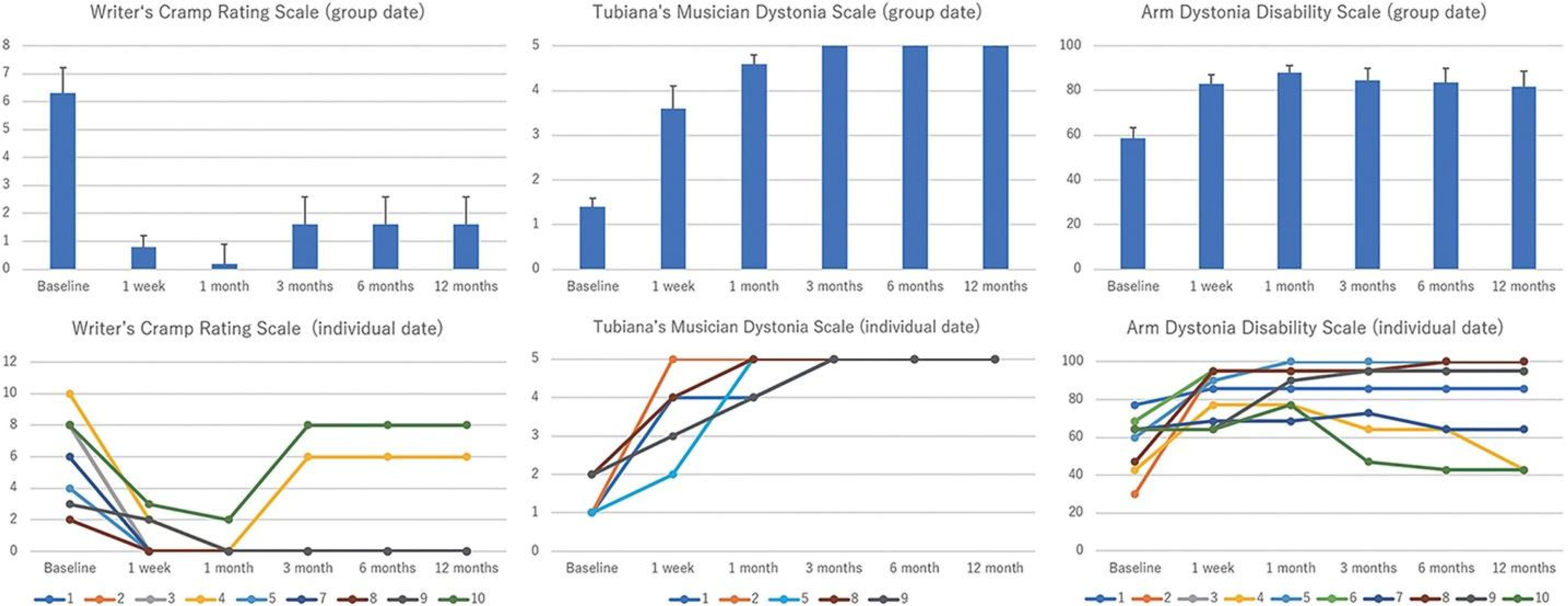Copyright
©The Author(s) 2024.
World J Psychiatry. May 19, 2024; 14(5): 624-634
Published online May 19, 2024. doi: 10.5498/wjp.v14.i5.624
Published online May 19, 2024. doi: 10.5498/wjp.v14.i5.624
Figure 3 Changes in primary and secondary clinical endpoints during the study period[86].
Primary clinical endpoints were the scores of the Writer’s Cramp Rating Scale (WCRS; ranging from 0 to 30, with higher scores indicating greater severity) and Tubiana Musician’s Dystonia Scale (TMDS; ranging from 1 to 5, with lower scores indicating greater severity), which evaluate dystonia severity. Secondary clinical endpoint was the score of the Arm Dystonia Disability Scale (ADDS; ranging from 0% to 100%, with lower scores indicating greater disability) to evaluate dystonia disability. Significant improvements were observed in the WCRS, TMDS, and ADDS scores throughout the study period in group data (upper row). Individual data are shown in the lower row. Citation: Horisawa S, Yamaguchi T, Abe K, Hori H, Fukui A, Iijima M, Sumi M, Hodotsuka K, Konishi Y, Kawamata T, Taira T. Magnetic Resonance-Guided Focused Ultrasound Thalamotomy for Focal Hand Dystonia: A Pilot Study. Mov Disord 2021; 36: 1955-1959. Copyright© The Authors 2021. Published by Movement Disorders published by John Wiley & Sons, Inc. (Supplementary material).
- Citation: Mohamed AA, Faragalla S, Khan A, Flynn G, Rainone G, Johansen PM, Lucke-Wold B. Neurosurgical and pharmacological management of dystonia. World J Psychiatry 2024; 14(5): 624-634
- URL: https://www.wjgnet.com/2220-3206/full/v14/i5/624.htm
- DOI: https://dx.doi.org/10.5498/wjp.v14.i5.624









